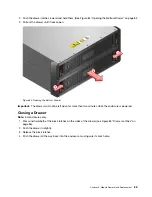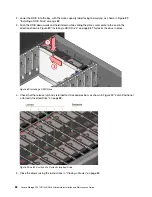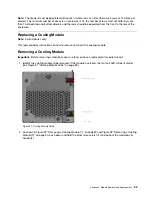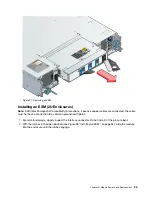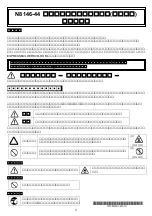
Chapter 7. GEM CLI Commands
Overview of GEM
GEM (Generic Enclosure Management) is the firmware responsible for actively managing the ESM and
enclosure electronics. Additional software is required for other components in the system. GEM resides in
flash memory.
In an enclosure with two ESMs, GEM runs on both of them in an active-active redundant configuration. This
allows for the collection of consistent enclosure status from either channel as well as providing dual path
control capabilities. As there are two instances of GEM, enclosure operation can be maintained in the event
that an ESM fails.
The enclosure management tasks performed by GEM include:
• Thermal management – Monitoring and control of temperatures and enclosure cooling.
• Power management – Intelligent power and fault tracking to ensure that the enclosure power supplies are
never oversubscribed. GEM allows you to power cycle individual ESMs as well as the enclosure as whole.
• Drive management – Spinning up drives using input from power management.
• SAS expander management – Control of access to the drives through SAS and providing of status
information about link quality and device mapping within the enclosure.
• High availability – Ensuring the management environment for both ESMs is synchronized and detecting
and managing of scenarios where an ESM has failed (dual ESM systems only).
• Battery management – Management of the battery system so that enclosures can flush their data caches
to non-volatile storage if AC power fails.
• Fault reporting – Collection of fault information gathered from the enclosure and its display on the various
fault indicators as well as the electronic interfaces provided.
Overview of the GEM CLI
The GEM firmware provides a built in command line interface (CLI) for interacting with the enclosure. This is
not intended as a general means of controlling the system (like SES or IPMI) and is most often used for
gathering data when a fault has occurred and for setting the SAS zoning profile.
The CLI is under continuing development and its behavior is subject to change.
As well as native CLI commands, the CLI can be used as a wrapper to send certain SES and IPMI
commands.
In the CLI commands listed in the following sections, these conventions are used:
• Parameters are given between angle brackets (<>). These must be substituted with a suitable argument.
The options available are described for each command. Parameters without angle brackets are literal text,
for example ‘all’ is sometimes used to specify all available options.
• Parameters in square brackets ([]) are optional.
• The vertical bar (|) is used to mean as a logical OR, meaning that one option or the other can be chosen.
Example:
help [all] | [<cmd>]
This means that the help command can be invoked with the all parameter or the name of a command:
© Copyright Lenovo 2016, 2018
97
Содержание D1212
Страница 6: ...iv Lenovo Storage D1212 D1224 D3284Hardware Installation and Maintenance Guide ...
Страница 20: ...xviii Lenovo Storage D1212 D1224 D3284Hardware Installation and Maintenance Guide ...
Страница 26: ...6 Lenovo Storage D1212 D1224 D3284Hardware Installation and Maintenance Guide ...
Страница 52: ...32 Lenovo Storage D1212 D1224 D3284Hardware Installation and Maintenance Guide ...
Страница 55: ...Figure 37 Unpacking the 2U12 and 2U24 Enclosure Systems Chapter 3 Installation 35 ...
Страница 70: ...50 Lenovo Storage D1212 D1224 D3284Hardware Installation and Maintenance Guide ...
Страница 136: ...116 Lenovo Storage D1212 D1224 D3284Hardware Installation and Maintenance Guide ...
Страница 142: ...122 Lenovo Storage D1212 D1224 D3284Hardware Installation and Maintenance Guide ...
Страница 150: ...Taiwan BSMI RoHS declaration 130 Lenovo Storage D1212 D1224 D3284Hardware Installation and Maintenance Guide ...
Страница 152: ...132 Lenovo Storage D1212 D1224 D3284Hardware Installation and Maintenance Guide ...
Страница 153: ......
Страница 154: ......



